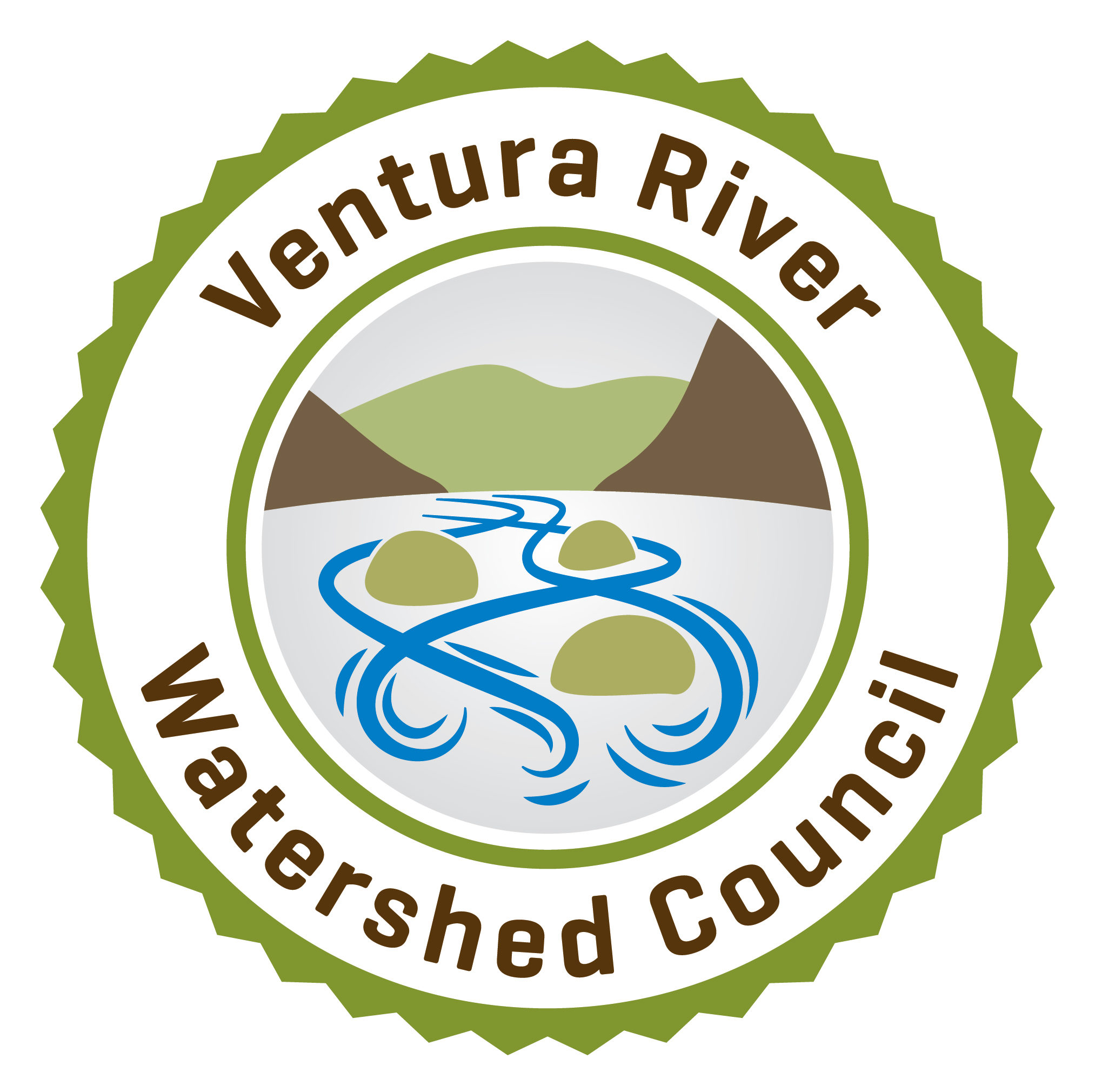What is a Watershed?
A watershed, also called a drainage basin or catchment basin, is an area of land that drains into a common water body—in our case, the Ventura River. Your bathtub is a small watershed, bordered by a ceramic rim. The Ventura River watershed is a large watershed, border by the high mountains of Nordhoff Ridge and White Ledge Peak. Ridgetops form the boundaries between watersheds.
Everything in a watershed that depends upon water is related in one way or another—streams, aquifers, lakes, habitats, and people—so changes or impacts to one part of a watershed ripple through and affect other parts. Watershed boundaries often cross county, state, and international borders.
A Remarkable Watershed
The Ventura River watershed, the smallest of Ventura County’s three major watersheds, covers an area of about 226 square miles (144,833 acres). All of this land drains into the Ventura River, either directly or through creeks and tributaries, each of which has its own smaller drainage area called a subwatershed. Major tributaries include Matilija Creek, North Fork Matilija Creek, San Antonio Creek, and Canada Larga. The Ventura River watershed, like the county’s other major watersheds—Santa Clara River and Calleguas Creek—ultimately drains to the Pacific Ocean.
The Ventura River watershed is a remarkable watershed for several reasons. First, unlike most watersheds in southern California, no imported water is used; residents rely 100 percent on local water supplies. Lake Casitas, fed by diverted Ventura River water and Coyote Creek, is the primary supplier of water from the watershed. The city of Ventura also diverts surface and subsurface water from the Ventura River in the Foster Park area. Groundwater, provided by individual wells or small water companies, is another important water source in the watershed, especially for farmers. Aquifers in the watershed tend to drain relatively quickly, but also recharge quickly with sufficient rain. Many farmers and small water districts rely on groundwater until supplies run dry and then use Lake Casitas water as their backup.
Second, the land in the watershed is largely undeveloped. The northern half the watershed lies within the Los Padres National Forest, with much of the Matilija Creek subwatershed (the actual beginnings of Ventura River) protected in a legislatively-designated wilderness area; and most of the southern half of the watershed lies within unincorporated Ventura County, which has policies that favor agricultural and open space land uses. Though we definitely have significant watershed challenges, these would be much worse if the watershed were covered in pavement and rooftops. Urban areas in the watershed include the city of Ojai; the communities of Meiners Oaks, Mira Monte, Oak View, Live Oak Acres, Casitas Springs, and Matilija Canyon; part of Upper Ojai; and part (mostly the Avenue) of the city of Ventura.

Third, the watershed benefits from an exceptionally high level of citizen stewardship. We have a volunteer water quality monitoring group, Santa Barbara Channelkeeper’s StreamTeam, that has been collecting water samples throughout the watershed since 2005, and now has an important and much-referenced water quality data set. The vocal and persistent advocacy of two local nonprofit groups, Matilija Coalition and Surfrider Foundation, is largely responsible for bringing attention to the problems caused by Matilija Dam (beach erosion, streambank erosion and habitat degradation), which helped launched efforts, now underway, to remove the dam. The Ojai Valley Green Coalition, a very effective organization that has been advocating for and educating on all things green for many years, is heading up the restoration of the Ojai Creek which runs through the city of Ojai. The Ojai Valley Land Conservancy and the Ventura Hillsides Conservancy, supported directly with dollars from local residents, are buying up and restoring key streamside parcels; these properties also provide rare access for residents to enjoy these beautiful places. And there are exceptional examples of watershed stewardship by private landowners, from owners of single-family properties who replace impervious hardscapes with water-harvesting landscapes, to farmers using state-of-the art technologies for maximum water-use efficiency, to a major landholder of river bottom property personally funding the removal of invasive giant reed on nearly 50 acres of property. This is just a sampling of the citizen stewardship in our remarkable watershed.
And finally, the Ventura River Watershed Council has a plan to help ensure the watershed’s protection into the future. The plan identifies ways in which the many efforts underway in the watershed can complement and support one another; it outlines—for the community, for decision-makers, and for all stakeholders—the many projects that could help advance a sustainable watershed; and it identifies among those the ones of greatest priority.

